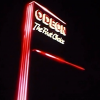| Welcome, Guest |
You have to register before you can post on our site.
|
| Latest Threads |
Jurassic Park 35mm 6.5K s...
Forum: In progress
Last Post: OpenMatteFan
7 hours ago
» Replies: 229
» Views: 113,153
|
Blown away LD or cinema t...
Forum: Requests, proposals, help
Last Post: Beber
7 hours ago
» Replies: 10
» Views: 3,543
|
Alien: Covenant - IMAX/Op...
Forum: Released
Last Post: madara4651
Yesterday, 05:00 PM
» Replies: 17
» Views: 13,471
|
Total Recall 35mm Regrade
Forum: In progress
Last Post: lalajones
Yesterday, 12:59 PM
» Replies: 26
» Views: 10,744
|
Minority Report (2002) - ...
Forum: Released
Last Post: uVSthem
2025-12-13, 09:41 PM
» Replies: 3
» Views: 180
|
hello! I had no idea this...
Forum: Presentation
Last Post: CSchmidlapp
2025-12-12, 09:39 PM
» Replies: 3
» Views: 215
|
The Bourne Identity - The...
Forum: Released
Last Post: HD335
2025-12-12, 05:25 AM
» Replies: 38
» Views: 13,055
|
TROY (2004) - Replace Sco...
Forum: Requests, proposals, help
Last Post: five2one
2025-12-11, 11:37 AM
» Replies: 30
» Views: 15,389
|
Superman: The Movie 4K
Forum: Official and unofficial releases
Last Post: AdmiralNoodles
2025-12-11, 09:08 AM
» Replies: 69
» Views: 69,660
|
Peanuts DVD mono synched ...
Forum: Released
Last Post: uVSthem
2025-12-11, 04:45 AM
» Replies: 17
» Views: 10,951
|
|
|
| Jaws LD mono track |
|
Posted by: crissrudd4554 - 2016-01-15, 01:22 AM - Forum: Requests, proposals, help
- Replies (74)
|
 |
This is my first real thread so bare with me. I was curious if anyone has considered preserving the mono mix for Jaws from the 1995 Laserdisc. Im asking cause I noticed some things are more audible on my 1995 VHS then in the mono mix that accompanies the current releases. This includes Cassidy burping at the end of the opening scene and Brody's scream when the rigging holding the shark cage comes apart. Now granted Ive never seen a movie on Laserdisc so I actually dont know how it sounds. Im just guessing based on the VHS. This is also another reason i suggested the 1995 Laserdisc since most pre1995 releases have a different song being played in the beach scene where the kid on the raft is killed. Anyways just a suggestion. A few things about the mono mix on the current releases. Im actually quite happy with the mono mix from the 2005 DVD. I dont have the BluRay but I do have the 2012 DVD. The mono mix on that DVD is mostly identical to the 2005 mix. However the 2005 mix I noticed is slightly crisper and the 2012 mix has a few 'flaws'. This includes some sound effects being about a split second out of sync in the scene where the tiger shark is cut open and also the sound of the engine exploding is in the wrong pitch.
|

|
|
| [No LongerAvailable]The Good,The Bad and The Ugly International Cut/US Theatrical Cut |
|
Posted by: PDB - 2016-01-12, 05:39 PM - Forum: Released
- Replies (96)
|
 |
![[Image: the_good_the_bad_and_the_ugly_poster_art_by_jc_r.jpg]](https://s21.postimg.cc/e192x00sn/the_good_the_bad_and_the_ugly_poster_art_by_jc_r.jpg)
The Good, the Bad and The Ugly (International Cut v1.0)
Project Info:
The Good, The Bad and The Ugly (TGTBATU) is my favorite film of all time and over the weekend I had a desire to watch the old International Cut/US Theatrical Cut. So, I popped in the 98 DVD and as I was watching, I lamented the fact it wasn't in HD.
So I decided to assemble the IC/TC so I could watch it in HD. I pulled out my old work, re-cutting the 4K to the IC/TC while re-grading to the Mondo's (the Italian Blu-ray restoration) colors. I wanted to use the 4K since it had the best detail and grain but in getting out the old files, I remember why I abandoned it. The 4K's picture is bad all around. Its not just the colors but the contrast, gamma, shadows, highlights....basically everything. So I went back to the Mondo and decided to use that as the main source. Although it has less detail then the 4K, the colors are vastly superior. The hard part, the audio, was already taken care by thehutt on the OT. He took his 4K mono soundtrack and synced it to the Mondo. That gave me an audio base to work with.
There is one problem. What cut represents the IC/TC? The 98 DVD/LD is itself a restoration of the film. Lil Brutto (Fanres' TGTBATU expert) found out in fact the 93 LD cut is in fact the truest version of the IC/TC. Its shorter then the 98 version (itself a restoration), missing shots here and there. For example, close-ups of the bandits in the beginning, shots of Angel Eyes eating, shots from Tuco's gang sneaking up the stairs, shots from the Blondie hanging scene, shots from Tuco's bath, etc.
(I'll follow up this post with a cut list)
So the goal it to quickly throw together the 93 IC/TC using the Mondo, 4K and old Extended Edition BD and have it be a stop gap till the better TGTBATU project is released.
Video:
The Italian transfer from the Mondo BD cut down to sync with the 1993 laserdisc of the International/US Theatrical cut. Additional parts from the US 4K and older Extended Edition BD.
Audio:
The mono soundtrack from the 1993 laserdisc in PCM 2.0 format.
Pics:
MKV Pics (Final)
![[Image: JepA5f2.jpg]](https://i.imgur.com/JepA5f2.jpg)
Thanks
Lil Brutto: for information on the various cuts and additional soundtracks
thehutt: for his original English audio sync to the Mondo.
Chewtobacco: for advice and additional video
|

|
|
| Buying discs separately |
|
Posted by: FrankT - 2016-01-09, 01:22 AM - Forum: Everything else...
- Replies (4)
|
 |
I'm trying to think, where was that one site where you could buy Blu-ray discs separate from their bigger box-set releases? I think it was called iDisc or something, but that can't be right...
|

|
|
| [proposal] LADY SNOWBLOOD 1 & 2 |
|
Posted by: The Griff - 2016-01-07, 01:33 PM - Forum: Requests, proposals, help
- Replies (4)
|
 |
So there are now two BD releases of these films: the UK Arrow edition and the US Criterion edition.
The Arrow edition was unfortunately mastered in RGB colour space, resulting in grey black levels and a washed-out look.
Criterion have reportedly done their own scan but it looks horribly contrast-boosted with over-saturated colours.
You can observe a comparison between the two releases here.
I'm proposing that a capable party might like to take the Arrow edition and either simply tweak it for BD compliant colour levels or perhaps do a more discretionary adjustment.
If they had access to the Criterion release as well, they might prefer to use their slightly higher quality audio (assuming it matches). From the looks of things, the subtitles on both releases are identical but I do like that Criterion have them within the picture, making them compatible for people with 21:9 displays (*cough*).
I can assist in providing the source materials for either/both releases if necessary.
Seems to me like a simple job for someone with a bit of experience and a half decent PC. Unfortunately, I have neither!
Any takers?
|

|
|
| Breaking Dawn part 2 |
|
Posted by: spoRv - 2016-01-06, 04:18 AM - Forum: Movies, TV shows and other
- No Replies
|
 |
Just two words: CGI CHILD
WTF... you can see it even if watched in lowres, on a 5in display, from another room... was it necessary? Absolutely NOT! Why they did it? Dunno...
|

|
|
| greetings from germany |
|
Posted by: mofo69 - 2015-12-27, 09:34 AM - Forum: Presentation
- Replies (10)
|
 |
hi,
this forum got my attention from song of the south.
I am addicted to 35mm format and love to hear the sound of a projector
and see all those scratches. as with vinyl they add a level of imperfection,
that makes me feel very comfortable.
but I also cheer when I see BDs with excellent transfers, that give you
a film-experience. (ok, not that many ....)
cu
|

|
|
|